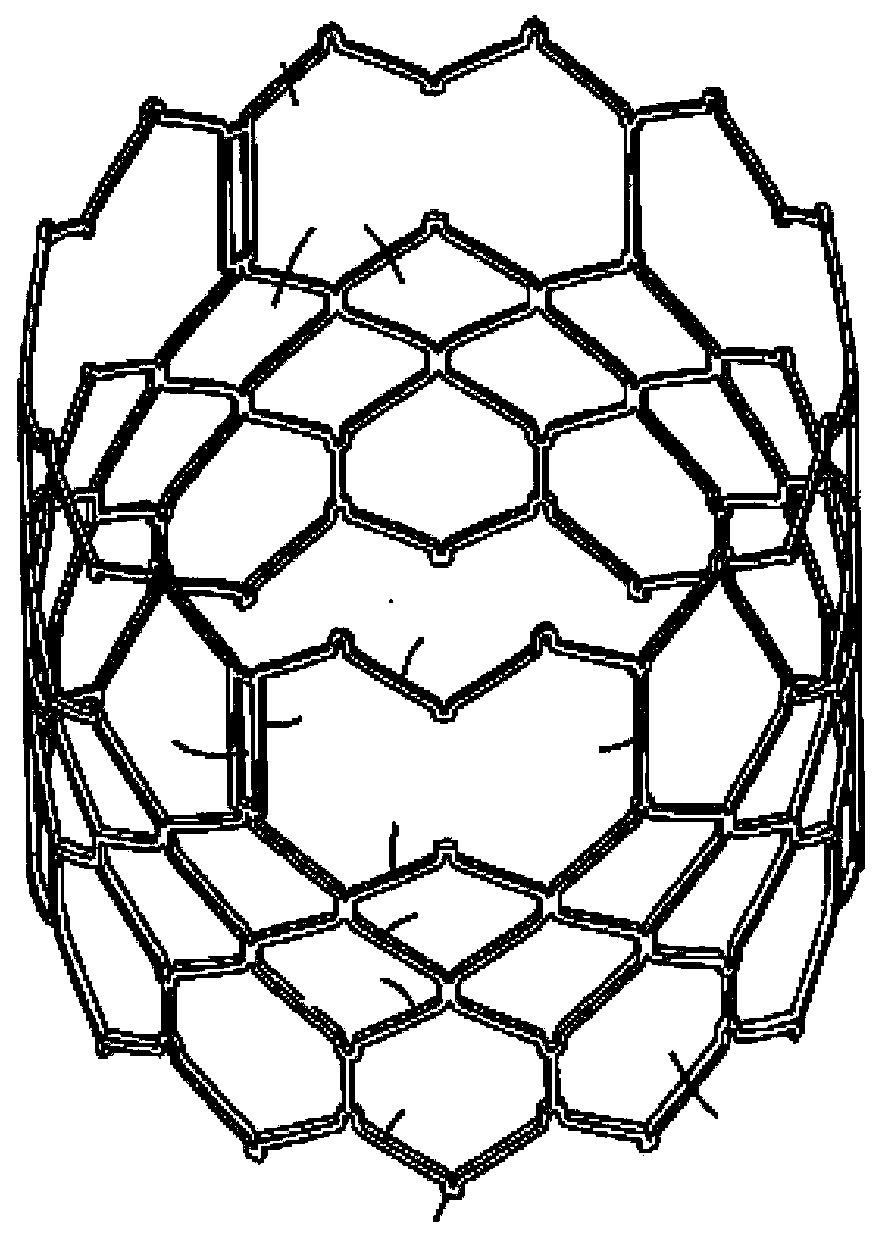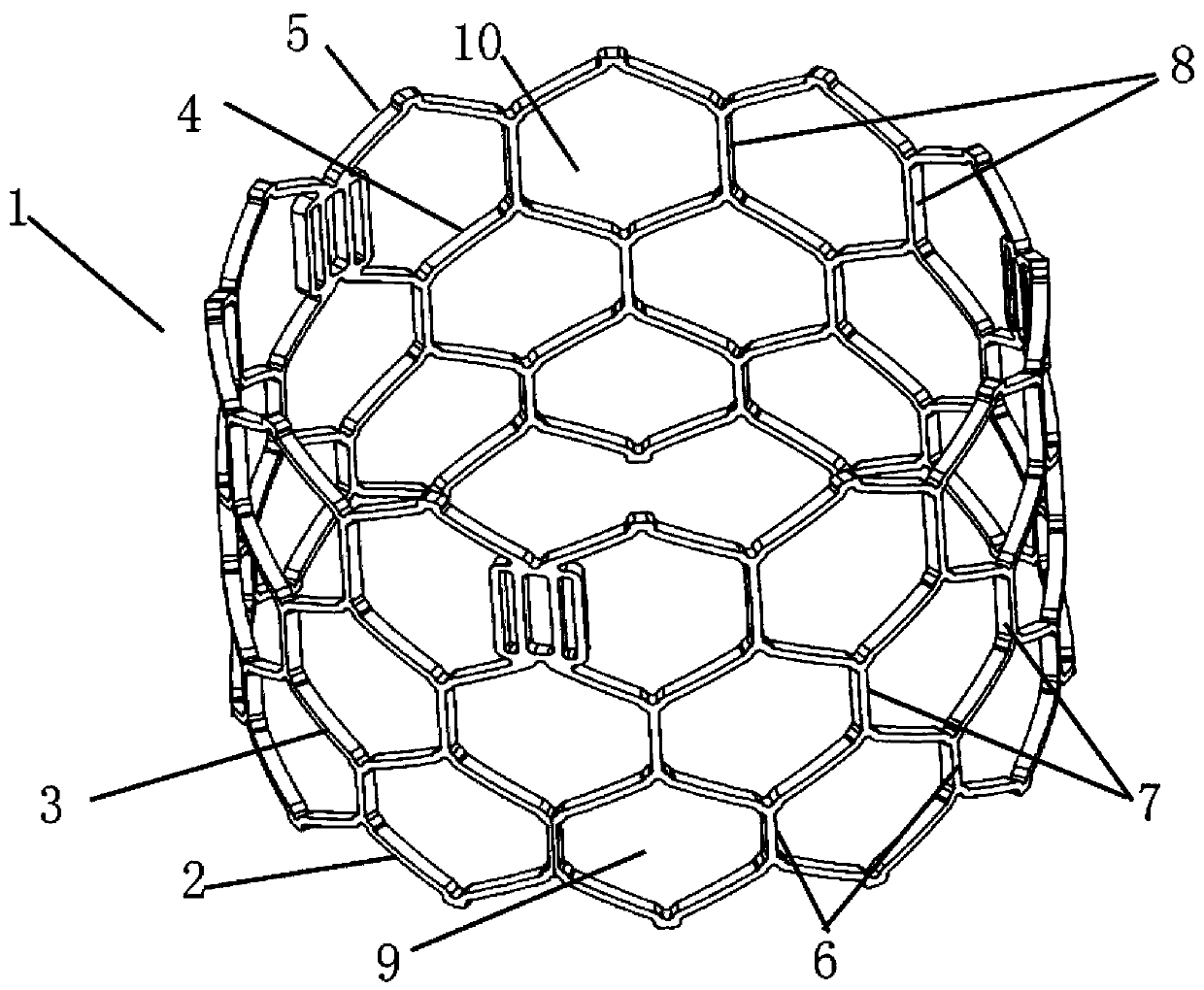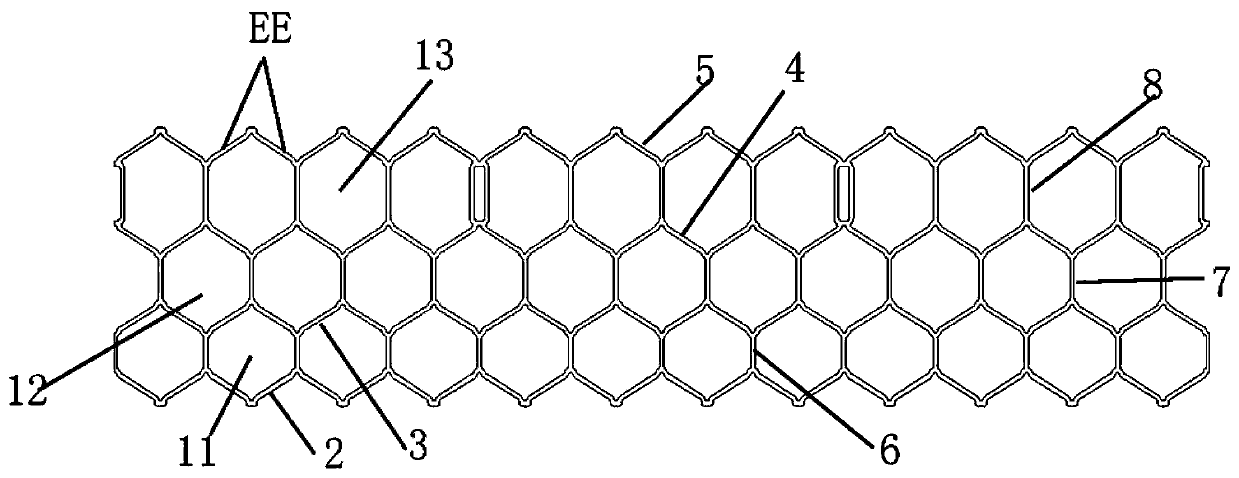Stent used for valve-in-valve intervention
A technology of strut and inflow end, applied in the field of interventional valve-in-valve and interventional pulmonary valve, can solve the problems of uncertain durability, failure, damage or calcification of biological valve, achieve reasonable fixation, good adhesion, avoid valve The effect of leaking
- Summary
- Abstract
- Description
- Claims
- Application Information
AI Technical Summary
Problems solved by technology
Method used
Image
Examples
Embodiment Construction
[0019] The following specific examples are used to illustrate specific implementation methods. It should be understood that the specific examples described here are only used to explain the present invention, and are not intended to limit the present invention.
[0020] Interventional valve-in-valve is usually used in previously surgically implanted or intervened failed bioprosthetic heart valves (including implanted or intervened bioprosthetic valves in four valve positions) to achieve reintervention of heart valves. The existing stent structures for interventional valve-in-valve are as follows: figure 1 shown.
[0021] refer to figure 2 and image 3 As shown, a stent 1 for intervening valve-in-valve, the stent is a metal mesh tube, and the stent 1 has four rows of circumferential struts 2, 3, 4, 5 extending transversely, each row of circumferential struts A plurality of axial struts 6, 7, 8 are arranged between them, and the axial struts of each row are arranged alternat...
PUM
 Login to View More
Login to View More Abstract
Description
Claims
Application Information
 Login to View More
Login to View More - R&D
- Intellectual Property
- Life Sciences
- Materials
- Tech Scout
- Unparalleled Data Quality
- Higher Quality Content
- 60% Fewer Hallucinations
Browse by: Latest US Patents, China's latest patents, Technical Efficacy Thesaurus, Application Domain, Technology Topic, Popular Technical Reports.
© 2025 PatSnap. All rights reserved.Legal|Privacy policy|Modern Slavery Act Transparency Statement|Sitemap|About US| Contact US: help@patsnap.com



